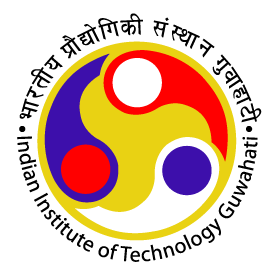
Third Semester B.Tech Core Course Syllabus
| Course Code: DA211 | Course Name: Algorithms and Data Structure | Credits: 3-0-0-6 |
|---|---|---|
| Pre-requisite: None | ||
| Syllabus: Models of Computation; representations of algorithms; performance of algorithms: space and time complexity measures, asymptotics, worst case and average case analyses, lower and upper bounds; Operations on data; elementary data structures: linked lists, arrays, matrices, stacks, queues, binary trees, trees, heaps; tree traversals; linear search and binary search; priority queues: lists and heaps; Sorting algorithms; analysis of sorting algorithms; lower bound for sorting. Search Trees: binary search trees, AVL trees, B-trees; Graphs: representations, depth-first search, breadth-first search, connectivity, shortest paths, matching; Hashing: separate chaining, linear probing, quadratic probing; Algorithm design techniques: the greedy method, divide-and-conquer, dynamic programming, backtracking, branch and bound, local search; Priority Queues: heaps, binomial heaps. Numerical algorithms; Complexity classes P, NP, PSPACE; reducibility, NP-hard and NP-complete problems. | ||
Textbooks:
|
||
References:
|
||
| Course Code: DA212 | Course Name: Algorithms and Data Structure Lab | Credits: 0-0-3-3 |
|---|---|---|
| Pre-requisite: CS110 | ||
| Syllabus: Programming Laboratory will be set in consonance with the material covered in DA211. The programming assignments could be in object-oriented programming languages like C++ or Java or Python. | ||
References:
|
||
| Course Code: DA242 | Course Name: Discrete Mathematics | Credits: 3-0-0-6 |
|---|---|---|
| Pre-requisite: None | ||
| Syllabus: Foundations: sets, operations on relations and functions, closures, countability, cardinal numbers, mathematical induction, structural induction, partial orders, Hasse diagrams, lattices, Boolean algebras, Boolean functions, fuzzy sets, operations on fuzzy sets and fuzzy relations. Logic: connectives, formulae, normal forms, implications and derivations in propositional logic; predicates, quantifiers, interpretations, prenex normal form, derivations and resolution in predicate logic, representation of natural language sentences and checking the validity. Combinatorics: permutation, combinations, enumeration, inclusion-exclusion, recurrences, generating functions, solutions of recurrences. Graphs and trees: basics of graphs and digraphs, subgraphs, isomorphism, special classes of graphs, connectedness, Euler and Hamilton paths, planar graphs, graph colouring, colouring theorems, trees, counting in trees, matching. | ||
Textbooks:
|
||
References:
|
||
| Course Code: DA231 | Course Name: Introduction to Data Science | Credits: 2-0-2-6 |
|---|---|---|
| Pre-requisite: None | ||
| Syllabus: Overview of Data Science, Data Science task workflow; Programming: basics of R, Data Science libraries, Data Science platforms and competitions. Data collection and management: Nature of data sets; Multimodal data, structured and unstructured data; Data collection and curation; Concepts in data management: XML and JSON file formats, basics of SQL; Data cleaning, exploration, plots: Reading and exporting data, cleaning data; Exploratory data analysis: Missing values, Outlier detection, Data Transformation. Model building, training, evaluation: Machine Learning Task Workflow, train/validation/test set preparation, Linear regression and Bayes Classifier; Model training and performance analysis. Data storytelling; Model deployment and maintenance. Real-world applications to showcase data science task workflow. | ||
Textbooks:
|
||
References:
|
||
| Course Code: DA241 | Course Name: Statistical Foundations for Data Science | Credits: 3-0-0-6 |
|---|---|---|
| Pre-requisite: None | ||
| Syllabus: Elements of descriptive statistics, averages, dispersion, skewness, quantiles; graphical displays, pie charts, bar charts, histograms, scatter plots, box plots, steam and leaf plots. Probability spaces, conditional probability, independence; Random variables, distribution functions, probability mass and density functions, functions of random variables, standard univariate discrete and continuous distributions; Mathematical expectations, moments, moment generating functions, inequalities; Multidimensional random variables, joint, marginal and conditional distributions, conditional expectations, independence, covariance, correlation, standard multivariate distributions, functions of multidimensional random variables; Forms of convergence, law of large numbers, central limit theorem. Sampling distributions; Point estimation - estimators, minimum variance unbiased estimation, maximum likelihood estimation, method of moments estimation, Cramer -Rao inequality, consistency; Interval estimation; Testing of hypotheses - tests and critical regions, Neymann-Pearson lemma, uniformly most powerful tests, likelihood ratio tests. Linear regression, ANOVA, discriminant analysis. Computing techniques, cross-validation, bootstrap re-sampling. | ||
Textbooks:
|
||
References:
|
||
| Course Code: DA251 | Course Name: Signals, Systems, and Networks | Credits: 3-0-0-6 |
|---|---|---|
| Pre-requisite: None | ||
| Syllabus: Continuous and discrete time signals: properties of signals and various signal operations; Signal representation: signal space and orthogonal bases, Fourier series representation of continues time signals, Fourier transform; Sampling theorem: aliasing, signal reconstruction, ideal interpolation, zero and first order hold; Discrete Time Fourier Transform (DTFT), Discrete Fourier Transform (DFT) and their properties; Laplace Transform; Z-transform. Classification of systems and system properties; Linear Time Invariant (LTI) system: continuous and discrete time; Time domain representation of LTI system: Impulse and step response, convolution and response to arbitrary input; Frequency response of LTI systems. Overview of electrical networks, Node and mesh analysis, superposition, Thevenin's theorem, Norton’s theorem, reciprocity. Sinusoidal steady state analysis: phasor representation, complex power, maximum power transfer, Time and frequency domain analysis of linear bilateral networks, application Laplace transform; Linear 2-port network parameters. | ||
Textbooks:
|
||
References:
|
||